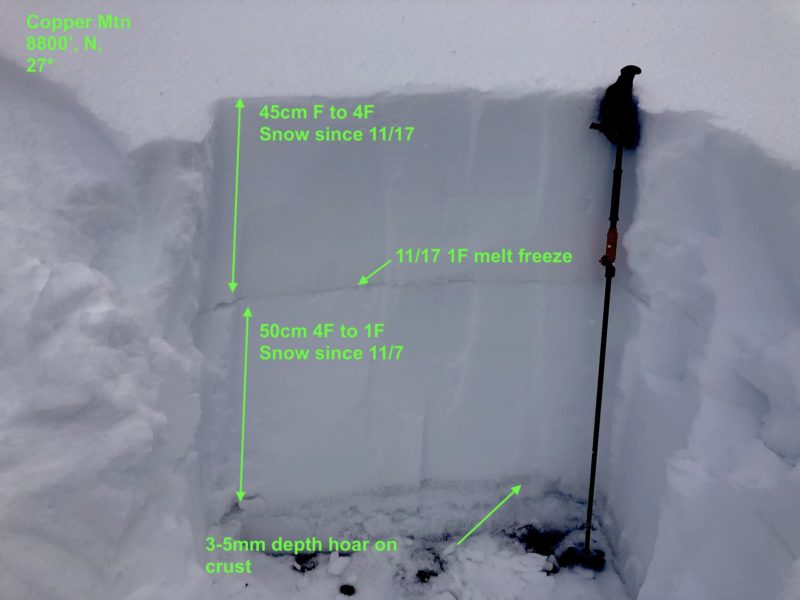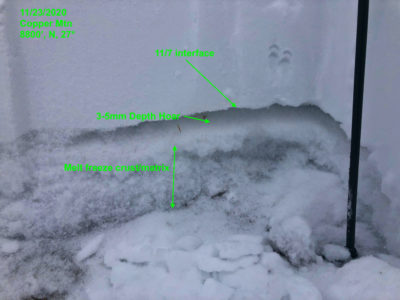Basic Information
Observation Details
Observation Date:
November 23, 2020Submitted:
November 24, 2020Observer:
SAC - Chris Lundy (off duty)Zone or Region:
Banner SummitLocation:
Copper Mountain (6900-8900', W-SW; N at 8800')Signs of Unstable Snow
Recent Avalanches?
None ObservedCracking?
None ExperiencedCollapsing?
None ExperiencedSnow Stability
Stability Rating:
GoodConfidence in Rating:
ModerateStability Trend:
SteadyBottom Line
Snowpack is generally stable and right side up. The important exception is on upper elevation, shady aspects where a layer of depth hoar/large-grained facets from October exist. This layer looks ugly, was reactive in tests, and is buried deep enough to be unpredictable.
Media/Attachments




Advanced Information
Weather Summary
Cloud Cover:
OvercastWind:
Light , WObservations were from 1300-1630. Clouds increased through this time period, with light snow flurries falling in the late afternoon. Temps remained brisk up high.
Snowpack Observations
Similar to observations from other locations in the forecast area, the snowpack is generally supportable, right-side up, and stable. The melt-freeze crust from the pre 11/17 warm-up and/or 11/17 rain event is present on all aspects and elevations here. Snow near the ground is strong and up to 1F in hardness.
The notable exception is where October snow existed before the early November snowfall (see photo in media). A pit dug on a N aspect at 8800' revealed an ugly weak layer (11/7) near the ground consisting of large-grained facets/depth hoar on a melt-freeze crust 95cm deep (3'+). This layer gave an ECTP24 result. See photos below and in the media section. This is a border-line deep slab problem: likely difficult to trigger, but it would produce a dangerous slide. Time and more observations will tell how widespread this problem is and how long it persists.
Snow surfaces are becoming very faceted and surface hoar exists on many slopes. You could get a loose dry avalanche to go on slopes over 40*.


Avalanche Problems
| Problem | Location | Distribution | Sensitivity | Size | Comments |
|---|---|---|---|---|---|
 Persistent Slab
Persistent Slab
|
|
Layer Depth/Date: 95cm Weak Layer(s): Nov 7, 2020 (DH) Comments: This info is based on limited information. |
Terrain Use
After seeing the 11/7 weak layer in the high, north pit - I would not feel comfortable entering consequential avalanche terrain where that layer exists.

